Spices & Sigiriya: Your Comprehensive Guide to the Modern Sri Lankan Wedding
Planning, attending or just nosy about Sri Lankan weddings? From poruwa to palmyrah décor, this Laali.co guide breaks down modern-day Sri Lankan wedding traditions, guest tips, what to wear, and how to celebrate with cultural confidence—especially if you're in the U.S.
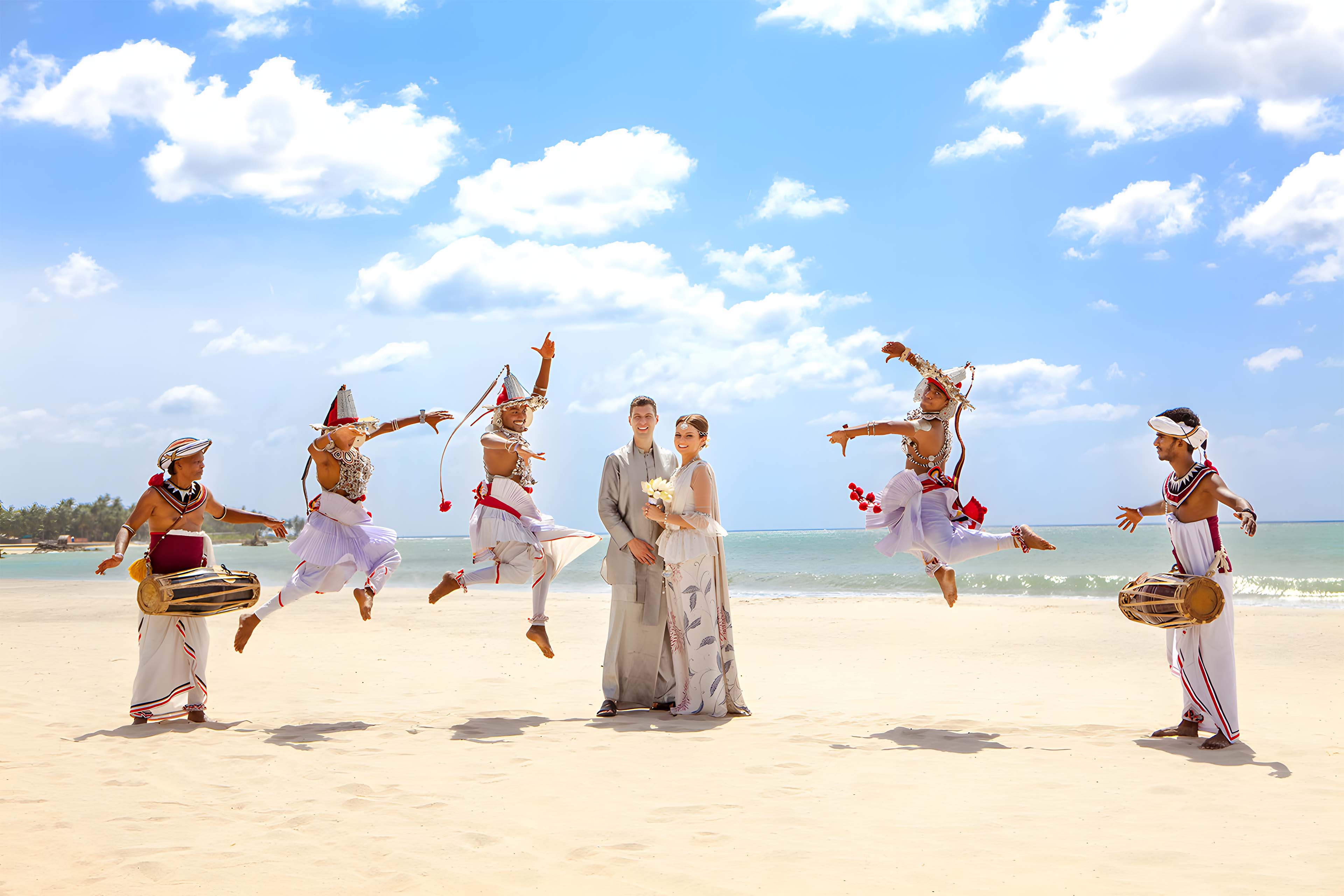
last updated: June 12th, 2025 | 9-minute read
First things first: Sri Lankan weddings are not just “like Indian weddings but smaller.” Nope. They’ve got their own heat, their own rhythm and—yes—their own obsession with coconuts. Whether it’s used to bless the couple, make the sambol, or decorate the centerpieces, coconut is basically the third wheel in every Sri Lankan love story. And honestly? We’re not mad about it.
But here’s where things get extra flavorful. “Sri Lankan” isn’t a monolith. You’ve got Sinhalese Buddhist ceremonies with ancient chants and poruwa platforms, Tamil Hindu weddings complete with kanyadaanam and fire rituals, Christian ceremonies with veils and vows, and Burgher or Muslim family traditions that come with their own rich histories. Then there’s the gorgeous chaos of diaspora and mixed-culture weddings—because sometimes your guest list includes two grandmothers, three priests, and a DJ who’s trying to mix baila with Beyoncé.
So if you’re here wondering what to wear to your Sri Lankan coworker’s wedding, how many ceremonies you’re about to get roped into, or whether you’re supposed to bow, hug, or just awkwardly hover—congrats. You’re in the right place.
This guide is for the curious, the clueless and the culturally entangled: brides, grooms, in-laws, event planners, wedding guests, and that one friend who insists on learning everything about Sri Lanka before RSVPing “yes.” And because this is Laali.co, we’re here to make it not boring, not overwhelming, and actually kind of fun.
By the end, you’ll know your poruwa from your palmyrah, your ves dancers from your vadai, and—fingers crossed—you won’t accidentally wear white to a Buddhist wedding. Let’s dive in.
Chapter 1: Pre-Gaming the Poruwa—Rituals, Relatives & a Ridiculous Number of Calendars
Before the sarees are steamed and the poruwa is Pinterest-worthy, there’s a whole flurry of behind-the-scenes rituals, auntie-approved blessings and an unhealthy number of WhatsApp arguments about guest lists. Welcome to the pre-wedding phase—where the real drama starts before the ceremony, and somehow everyone suddenly becomes an expert on astrology, tradition, and seating charts.
Auspicious... or Just Inconvenient?
First up: astrology. No, not your Co-Star app. In Sri Lankan weddings—especially Sinhalese Buddhist ones—the date and time of the wedding are often set by a professional astrologer. Think wedding planner meets cosmic translator.
And yes, it’s still a thing—even in Jersey. It’s called the nekatha, and it’s not just about good vibes. The astrologer (often working with the couple’s horoscopes) picks the most “prosperous” moment for the poruwa ceremony. Which is a cute way of saying: don’t book the venue until you check with the stars.
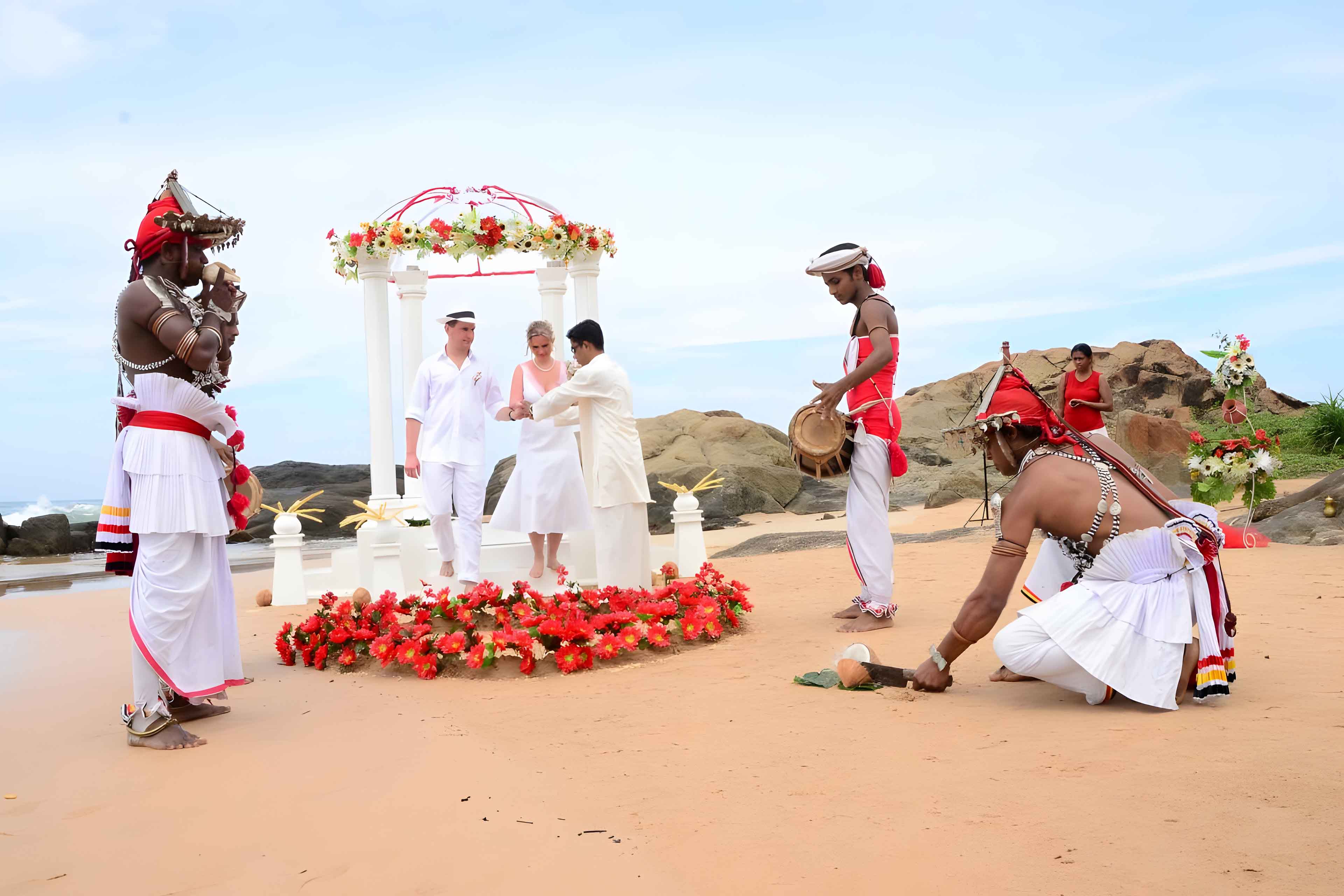
Not One-Size-Fits-Any: Religious & Regional Flavor
If you're expecting one kind of Sri Lankan wedding, prepare to be delightfully confused. Kandyan-style weddings feature regal outfits, drummers, dancers and enough gold to blind your ex. Meanwhile, Tamil Hindu ceremonies are deeply symbolic and full of fire (literally) with rituals like the thali tying and kanyadaanam. And Christian or Catholic ceremonies? Think veils, vows and violin covers of Ed Sheeran—plus a post-wedding church lunch where the sambol still slaps.
Engagements, Blessings & Drama Lite™
The engagement party (or as I call it, the soft launch of your mother-in-law) is where the families meet, size each other up, and pretend not to judge your outfit. Some families go big with dancers and décor. Others keep it intimate, just exchanging rings and throwing side-eyes.
In Buddhist traditions, there’s also the recitation of the Jayamangala Gatha—sacred verses chanted by monks to bless the union. You might also see elders offering betel leaves, lighting oil lamps, or tying thread around the couple’s wrists for protection. It’s sweet, spiritual, and—yes—very Instagrammable if done respectfully.
Henna or Nah?
Henna isn’t traditionally part of Sri Lankan weddings, but modern brides—especially in the U.S.—are remixing things. Some opt for full mehendi parties à la Bollywood. Others do minimalist designs, or none at all. There's no cultural faux pas here—just personal choice. So go ahead and book that mehendi artist if it makes you happy (and matches your mood board). You do you, coconut queen.
Chapter 2: All Eyes on the Poruwa—Sarees, Symbolism & the Main Event
It’s here. The big day. The outfits are steamed, the poruwa’s been blessed, and somewhere in the corner, an uncle is already fiddling with the mic. But if you think this is going to be a one-size-fits-all “walk down the aisle” situation, buckle up—because Sri Lankan wedding day traditions come with their own flow, symbolism, and a whole lot of coconut oil.
What Even *Is* a Poruwa?
Let’s start with the stage. Literally. The poruwa is a beautifully decorated wooden platform—think mini mandap meets sacred spotlight. It’s where the couple takes center stage (along with their poor parents, who definitely did not sign up to be in this many photos).
The poruwa ceremony is rooted in Sinhalese Buddhist tradition, and it’s a moment packed with ritual, respect, and real emotion. Diaspora couples often adapt it to fit their vibe—sometimes keeping the cultural elements, sometimes mixing in Western touches like personal vows or unity candles.
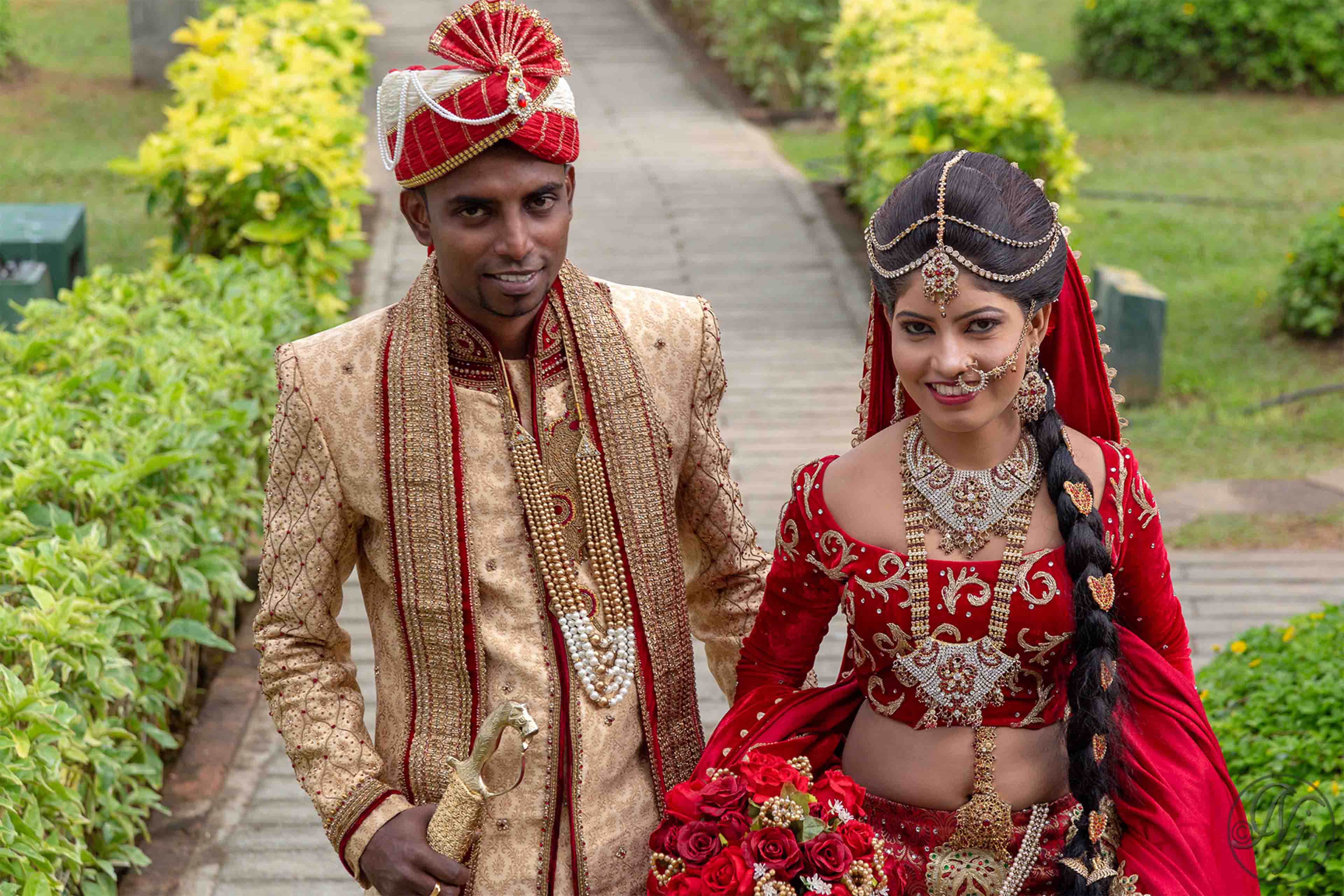
Poruwa Ceremony—Step by Symbolic Step
- Stepping onto the poruwa: The couple enters from opposite sides, stepping onto the platform together—symbolizing the merging of two lives and, let’s be real, two WhatsApp family groups.
- Offering betel leaves: A traditional sign of respect and blessing, betel leaves are offered to elders and the couple.
- Thread tying: Elders tie gold-threaded cords around the pinkies of the couple, connecting them together (spiritually and literally—don’t trip).
- Oil lamp lighting: Symbolizes wisdom, hope, and a future full of light (and possibly arguments about air fryer placement).
- Ring exchange: Not strictly traditional, but often included these days—because hey, diaspora brides love their bling.
- Final blessings: A showering of rice or flowers, sometimes chanting or singing—basically the spiritual mic drop.
Who's Running This Show?
Depending on the couple’s background, the ceremony might be led by a Buddhist monk, a celebrant, a Christian priest or a civil officiant. Some weddings feature multiple officiants or do back-to-back ceremonies to honor both families’ traditions (pro tip: schedule buffer time, especially if Appa insists on a full homily).
In diaspora weddings, it’s common to bring in bilingual celebrants who can bridge generations—while keeping things moving (because no one wants a two-hour ritual in a humid rec hall).
Tamil Hindu Weddings: Another Kind of Sacred
If the couple’s Tamil, you’re in for a very different (and equally rich) tradition. The Hindu wedding takes place under a mandapam, with sacred fire rituals, garland exchanges, and the tying of the thali—a gold necklace that’s basically the OG wedding band.
These ceremonies are long, layered, and full of Vedic symbolism, with family roles woven into every moment. And yes, the food after slaps—expect dosas, sambars, and relatives comparing coconut chutneys like it’s the Met Gala of condiments.
Civil & Christian Ceremonies: Vows, Veils & Vibes
Christian weddings (especially among Burgher or Tamil Catholic families) often look like what you'd expect—white gowns, suits, and pews—but don’t assume they’re “Western” in spirit. You’ll still catch Sri Lankan elements like oil lamps, regional music, and cultural dress woven in wherever possible. Civil ceremonies tend to be more flexible, and couples may host a poruwa or Hindu ceremony separately to round it out.
Chapter 3: After the "I Do" (or Chanting)—Blessings, Baila & Leftovers for Days
You’d think once the poruwa is done or the thali is tied, the hard part is over. But no, my love—this is when the real party starts. Sri Lankan post-wedding events are less about winding down and more about doubling up. There are speeches, surprise performances, buffet lines long enough to rival TSA, and—if you’re lucky—at least one auntie dragging someone to the dance floor against their will.
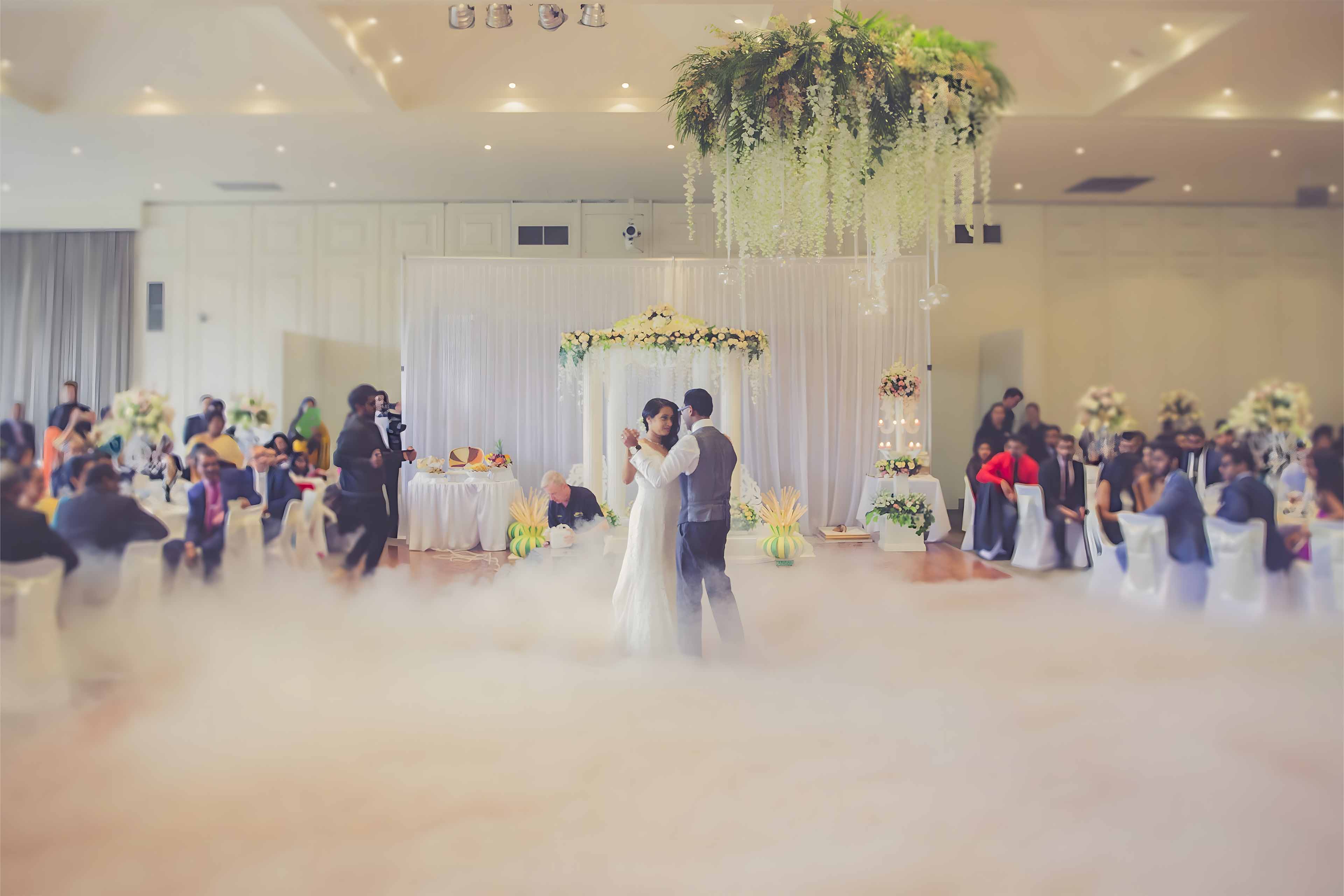
Reception Rundown: Lanka Style
At a Sri Lankan wedding reception, expect the usual suspects: speeches, dancing, outfit changes and cake-cutting. But everything’s got a little Lankan spice to it—sometimes literally. The couple might enter to a live baila band or a remix of “Manike Mage Hithe,” and the first dance? It might turn into a full-on family choreo if the cousins are extra (and they usually are).
Music, DJs & That One Uncle with a Playlist: Baila is king. If you’ve never danced to it, think Sri Lankan soca meets auntie-approved cardio. Diaspora weddings may also throw in Top 40, Tamil hits, or Sinhala remixes. Just a heads up: don’t play sad Bollywood breakup songs mid-reception unless you want to cause drama (or accidentally trigger a divorce auntie).
Rice, Curry & 14 Side Dishes—Minimum: The food is not a side note. It’s the headliner. Expect rice, at least three curries, sambol, mallung, and something deep-fried that no one can pronounce but everyone devours. Vegetarian options? Usually. Gluten-free? If you ask nicely. Just be ready for uncles to say things like, “Back in my day, we didn't ask for quinoa.”
Blessings, Temples & Thank-You Feasts
After the reception (or sometimes before), some couples host a home blessing or temple ceremony to kick off married life with a little divine backup. Buddhist families may invite monks to bless the home, while Hindu couples may return to the temple for further rituals. Either way, expect incense, flowers, and shoes left at the door.
And then there’s the “thank-you lunch”—a deceptively chill name for what often becomes a second reception. More food, more outfit changes, and more opportunities to explain why you’re still not married to your cousin’s friend from med school.
Favors, Fruit Baskets & Auntie-Approved Takeaways
Don’t leave empty-handed. Sri Lankan weddings are known for their sendoff gifts. It could be sweets, symbolic trinkets, or yes—an entire fruit basket complete with a coconut, banana bunch, and random biscuits you didn’t ask for but now love.
Chapter 4: Mixed Plates & Melting Pots—Culture, Religion & the Sri Lankan Fusion Wedding
If you’ve made it this far, congrats—you already know Sri Lankan weddings aren’t one-size-fits-all. But when it comes to culture, religion, and regional traditions? Let’s just say the buffet analogy holds: a little of this, a lot of that, and at least one thing you didn’t expect but loved anyway.
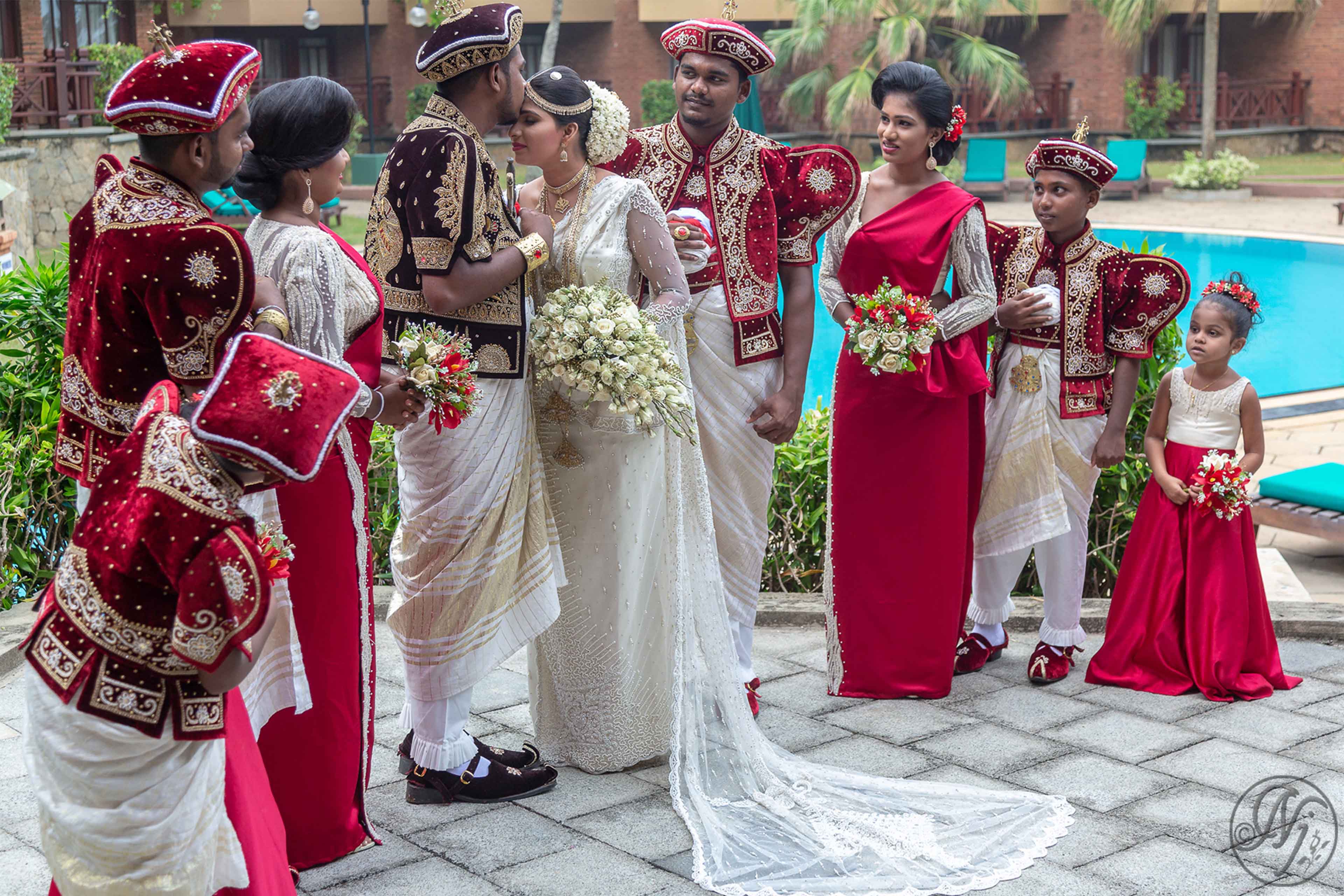
So Many Roots, So Many Rituals
Sri Lanka is home to a rich mix of communities—Sinhalese Buddhists, Tamil Hindus, Burgher Christians, Sri Lankan Muslims, and more—and wedding customs reflect that beautifully chaotic diversity. A Sinhalese wedding might center around the poruwa and Buddhist chants, while a Tamil wedding might include a mandapam, sacred fire rituals, and the tying of the thali.
Christian weddings might include vows, veils and a reception with both baila and Boney M. Meanwhile, Muslim weddings—often smaller in scale—can include a Nikkah-style religious ceremony and separate men’s and women’s functions, though fusion setups are increasingly common.
When Culture Mixes Like Curry and Mayo
Enter: the interfaith or interethnic wedding. Think Tamil bride, Sinhalese groom, Buddhist aunties, Catholic mom and a Jersey venue that’s deeply confused. This isn’t a theoretical—it’s the modern diaspora reality. “We did a poruwa AND wrote our own vows—fight me.”
Many couples now opt for dual ceremonies or blended rituals. That might look like lighting an oil lamp after exchanging rings, or scheduling a Sunday church ceremony after Saturday’s poruwa, or hiring a celebrant who can MC in both Sinhala and English without butchering anyone’s name. Inclusivity meets logistics. It’s a whole thing.
Diaspora DIY: Pinterest Meets Parippu
In the U.S., traditions are often filtered through what’s feasible, legal and Pinterestable. Not every venue allows open flames (sorry, fire god), and sometimes your ceremony has to fit into a 45-minute ballroom booking between two Bat Mitzvahs. But here’s the beauty of diaspora weddings: they’re customizable by default. You don’t have to choose between culture and convenience—you can mix both, like baila over brunch.
- Choose rituals that feel authentic—not performative. Keep the thread-tying, ditch the gender roles.
- Explain your fusion to elders ahead of time—sometimes a quick call with Appa goes a long way.
- Include both sides of your identity without watering either down. It’s not a compromise, it’s a remix.
Chapter 5: Guesting 101—What to Wear, Bring & Not Accidentally Say
So you’ve been invited to a Sri Lankan wedding. Congrats! You're about to experience an explosion of color, culture and coconut-based hospitality. But before you RSVP “yes” and show up in a crop top and heels that hate you, let’s talk dress codes, dos, and don’ts—without the cultural cringe or wardrobe malfunctions.
For Women: Saree vs. Osariya vs. Fusion Fits
If you want to go traditional, you can’t go wrong with a saree or osariya (also called a Kandyan saree). The osariya is uniquely Sri Lankan and tends to be worn at more formal or ceremonial events—especially if the bride is going full Kandyan. But let’s be real: not everyone wants to learn how to pleat like a pro the night before the wedding.
Modern fusion fits are totally fair game—think pre-stitched sarees, lehengas, anarkalis or a well-cut kurta set. Just skip anything too revealing or overtly white unless explicitly told otherwise (white = mourning in many Lankan communities).
For Men: Mul Anduma, National Dress & the Dhoti Situation
Yes, Sri Lankan grooms sometimes wear a mul anduma—and yes, it’s a power move. Guests usually don’t need to go that far. A national dress (shirt + sarong) is a classic option, while a kurta-pajama set or even a smart suit will do just fine. Just don't show up in cargo shorts or a tux. You’re not at a beach resort or the Oscars.
Guests, Planners, Vendors: Be Stylish, Not Stereotypical
Wearing South Asian attire as a non-Desi? Go for it—if you wear it respectfully. That means: don’t wear a bindi if it’s not part of the event, don’t mix multiple cultural elements like it's a costume party, and please avoid Amazon “Bollywood party” sets. No one needs to see another polyester paisley tragedy.
If you’re a planner, vendor, or +1 who’s nervous about making a faux pas—ask the couple or someone close to them. They’d rather answer your questions than cringe at your glittery feathered “sari gown” mid-ceremony.
Other Things You Might Overthink (But Don’t Have To)
- Footwear: Easy to slip off. Many venues (especially religious ones) are shoe-free zones.
- Colors: Bright and bold are always a yes. Just avoid solid white or full black unless told otherwise.
- Bowing? Just smile politely, do the palms-together greeting if you’re unsure, and follow the lead of elders.
Gift Etiquette: Beyond the Registry
Some couples will register. Others will appreciate a generous card with cash. Still others will smile while their aunties secretly judge your gift basket. Play it safe: ask the couple (or their closest cousin), and if all else fails, go practical and pretty—think quality kitchenware, a handwritten note, or gift cards to stores they’ll actually use post-honeymoon.
Chapter 6: New Traditions, Same Coconut Oil—Modern Trends & Diaspora Twists
Gone are the days when Sri Lankan weddings in the U.S. meant just picking between buffet vs. plated dinner. Today’s Lankan-American weddings are leveling up—borrowing from tradition, remixing the aesthetic, and throwing in a signature cocktail named after someone’s grandmother. If you’ve ever seen a poruwa ceremony next to a neon sign that says "till kiribath do us part," you already know: modern Sri Lankan weddings are doing the most—and we love that for them.
Modern Meets Mahaagedara: U.S.-Based Sri Lankan Weddings Today
Yes, astrology still picks the time. Yes, aunties still compare saree pleats. But today’s weddings are shorter, sharper, and more styled. Ceremonies are often consolidated into a single day (hello, venue costs), with couples choosing what matters most to them—whether that’s the poruwa, the thali, or a shared set of vows under a floral arch that would make Pinterest weep.
Décor That Says Colombo Meets Brooklyn
Think palmyrah leaves and gold oil lamps next to sleek minimal tablescapes. Some go full colonial nostalgia (lace umbrellas, vintage writing desks, velvet everything). Others lean into clean lines and tropical drama—bananas, monstera leaves, and a lighting scheme that would make your Gen Z cousin cry happy tears. Either way, the vibe is intentional, and often deeply personal.
Food: Still the Star of the Show
Kiribath isn’t just for breakfast anymore. You’ll see it plated like fine art at receptions or rolled into bite-sized appetizers. Modern menus keep the rice and curry staples—but add horapa cocktails, jackfruit sliders, or passionfruit pavlova. Diaspora couples often work with Sri Lankan-American caterers to balance tradition with dietary preferences (vegan moju, anyone?).
Entertainment: Drummers, DJs & Diaspora Baila
Live Kandyan drummers at the reception? Yes, please. Diaspora couples are blending cultural performance with modern party energy: think ves dancers doing a TikTok remix, baila bands covering 2000s R&B, or a dance floor that flips from traditional to full-on Cardi B by dessert.
The Rise of Sri Lankan-American Vendors
Here’s the real game-changer: vendors who actually understand what you mean when you say "poruwa ceremony with vegan dessert bar and bilingual MC." From planners and DJs to florists and mehendi artists—there’s a growing tribe of Sri Lankan-American pros who get it. And if you don’t want to explain what a mul anduma is to every vendor? We’ve got you: Laali.co is your low-drama, high-vibe shortcut to finding Sri Lankan-friendly vendors across the U.S.
Final Thoughts: Come for the Coconut, Stay for the Culture
If you’re still here, give yourself a gold star—or at least a second helping of kiri pani. Planning or attending a Sri Lankan wedding in the U.S. isn’t just about checking off rituals or Googling “how to tie a Kandyan saree without crying.” It’s about showing up with curiosity, care and a deep respect for the culture (and maybe a pocket of tissues for when the monk starts chanting or the sambol hits just right).
Don’t stress if you don’t get everything “right.” Cultural fluency doesn’t mean knowing every lyric to the Jayamangala Gatha—it means listening, learning, and showing up with good energy (and preferably, good snacks).
Whether you're planning your own poruwa moment or just figuring out what not to wear, Laali’s vendor search can connect you with pros who speak your culture and your timezone. From bilingual celebrants to sari stylists, we’ve got you.
Ready to go deeper? Explore our full library of South Asian wedding guides, or create a free account to start curating your own cross-cultural celebration.
Now go forth, embrace the betel leaves, and let that pol sambol live rent-free in your memories. You’ve got this.
xoxo,
Laali Ladki
FAQ: You Asked, Laali Answered
It depends on the couple’s background and ambition level. Some do it all in one day. Others stretch it over three days with pre-wedding blessings, the main ceremony, a reception, and a thank-you lunch that turns into another party. So yes, wear comfortable shoes—and pack snacks just in case.
Nope! The poruwa is part of Sinhalese Buddhist weddings—a beautiful, symbolic platform-based ceremony. Hindu weddings, especially Tamil ones, happen under a mandapam and include rituals around sacred fire, garlands, and the tying of a thali (a sacred necklace). Different vibes, same coconut energy.
Traditionally, no. But in the U.S.? Brides are mixing it up. Some host full-on mehendi parties, others go minimal or skip it entirely. There’s no cultural wrong here—just personal aesthetic choices. You do you, especially if it involves glittery fingertips.
Start with this: colorful, modest, respectful. Women can rock sarees, pre-stitched sarees, lehengas, or fusion fits. Men can do kurtas, national dress, or suits. Just skip the Halloween-costume energy and avoid white or solid black unless told otherwise.
Increasingly, yes. While it’s not traditional in Buddhist or Hindu ceremonies, many couples—especially in the U.S.—include ring exchanges as part of the program. Because symbolism + sparkle = diaspora gold.
Absolutely. Just read the invite carefully, dress appropriately, and follow the lead of elders if you’re unsure. Most couples love when guests take the time to learn a little about the traditions—it shows heart and respect. (Bonus points if you dance to baila.)
Usually, yes. Cards with cash are a safe bet. Some couples have registries, but if not, go for something thoughtful, practical or culturally aligned. Just maybe skip the monogrammed towels with “Live, Laugh, Love.”
Great question. A saree is a classic draped outfit found across South Asia. The osariya (or Kandyan saree) is uniquely Sri Lankan—with a structured jacket blouse and pleats at the back. It’s a whole look, and if the bride’s going Kandyan, you’ll see the difference immediately.
We got you. Laali.co has a growing list of Sri Lankan-American planners, celebrants, caterers, mehendi artists and more—who actually get your vibe. No culture-clashing, just connection and celebration.
Featured
Desi Weddings
Find Culturally Capable Vendors
You’re not just having a wedding, you’re having a South Asian wedding. From hosting multiple events to incorporating ancient traditions, there’s a lot that will make your wedding unique. With Laali, you can find vendors who get it and have experience making South Asian weddings spectacular!
Connect With Us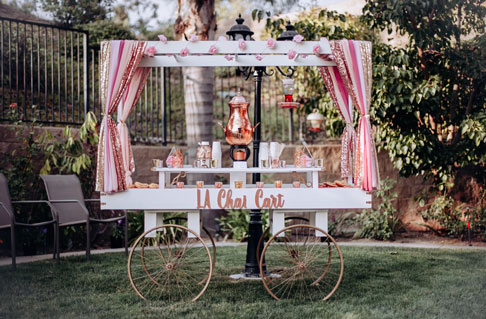

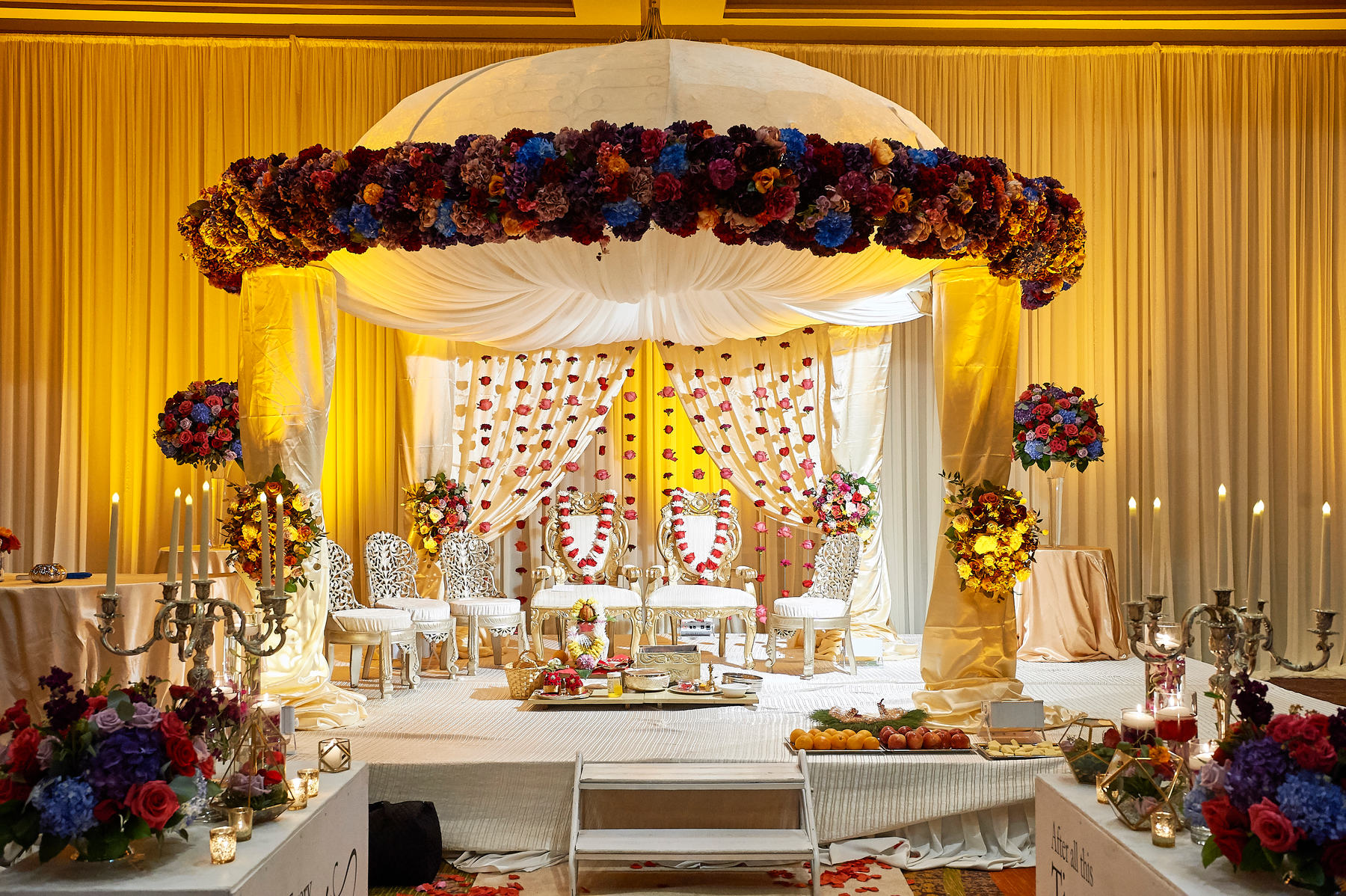
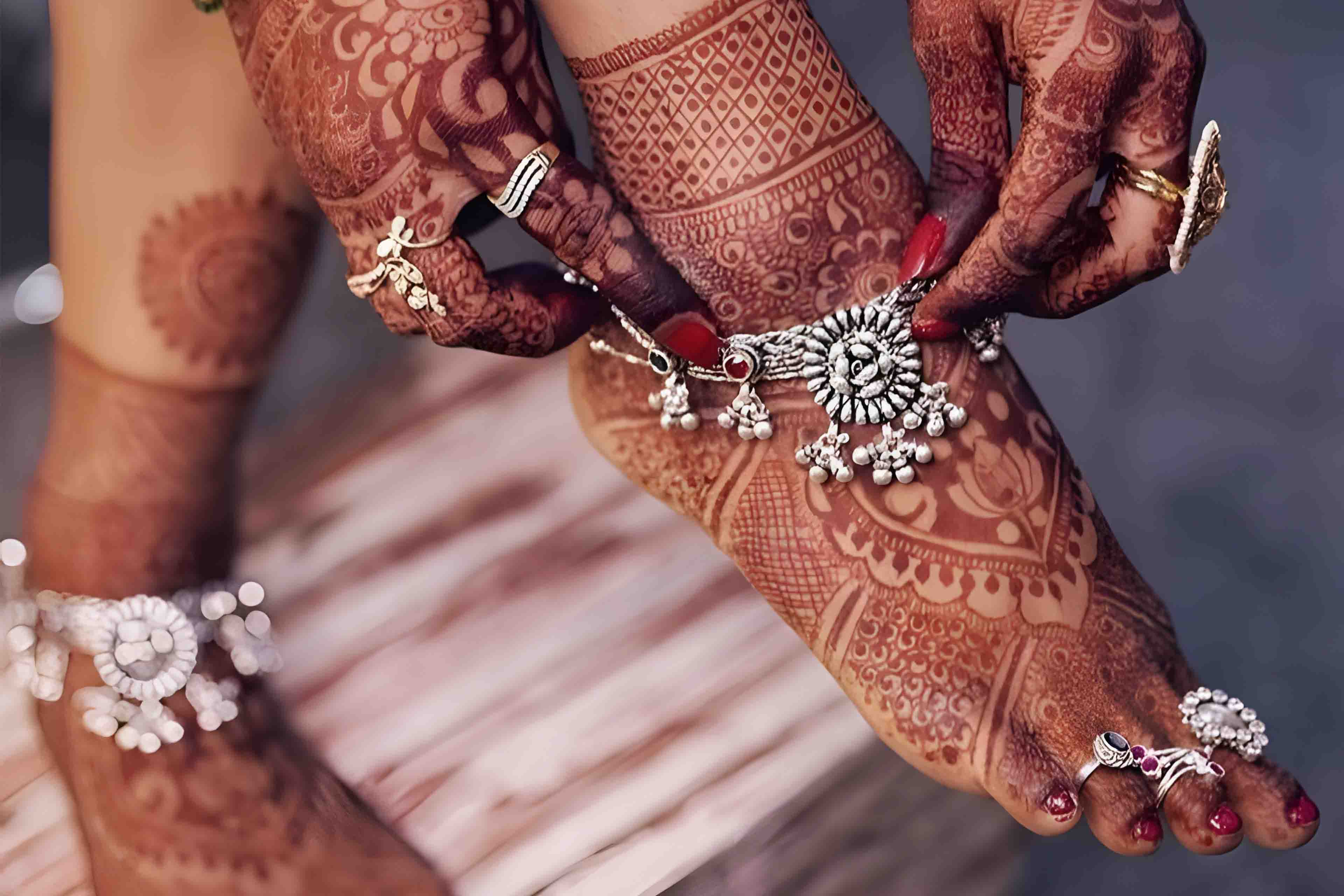
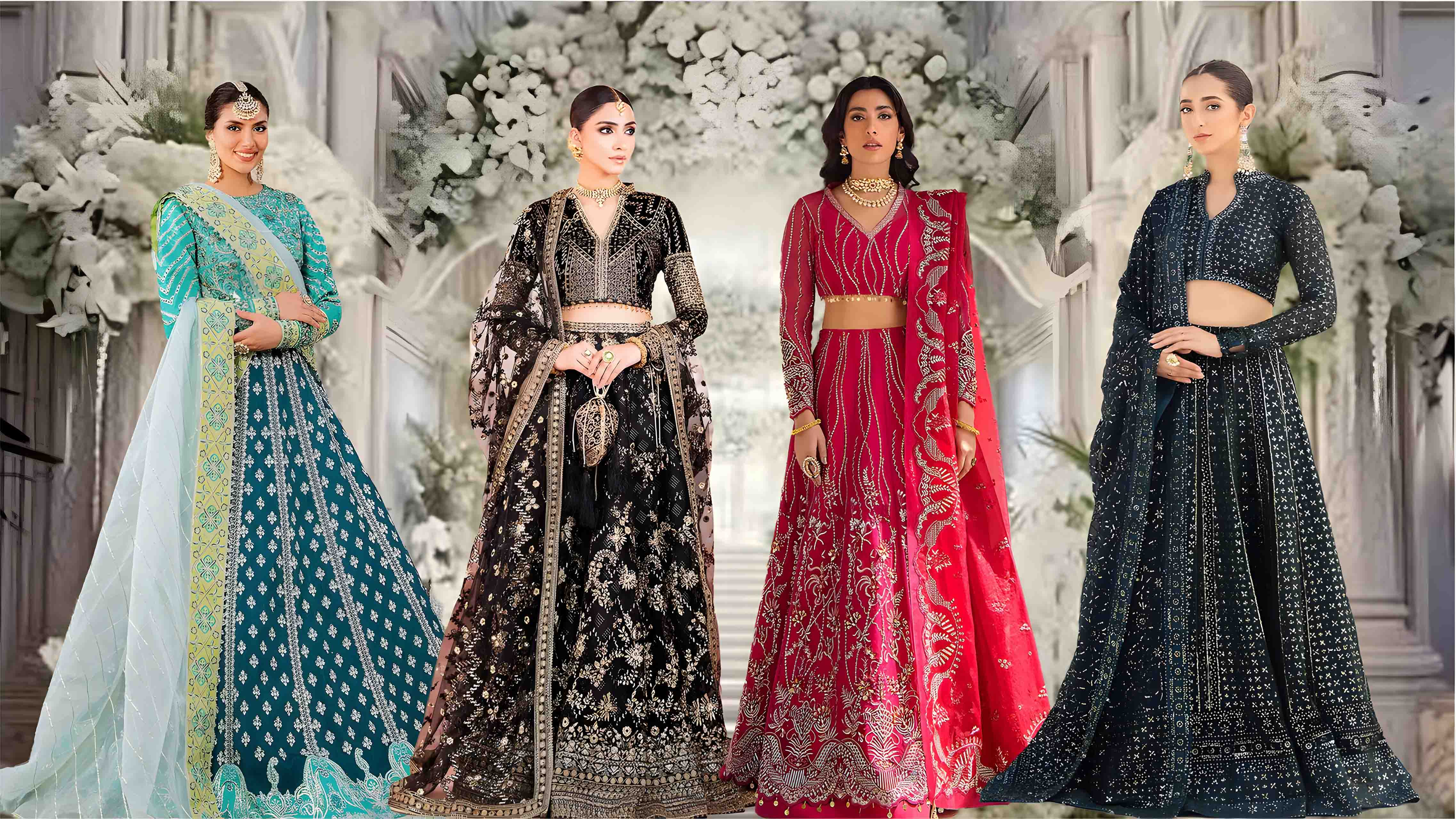
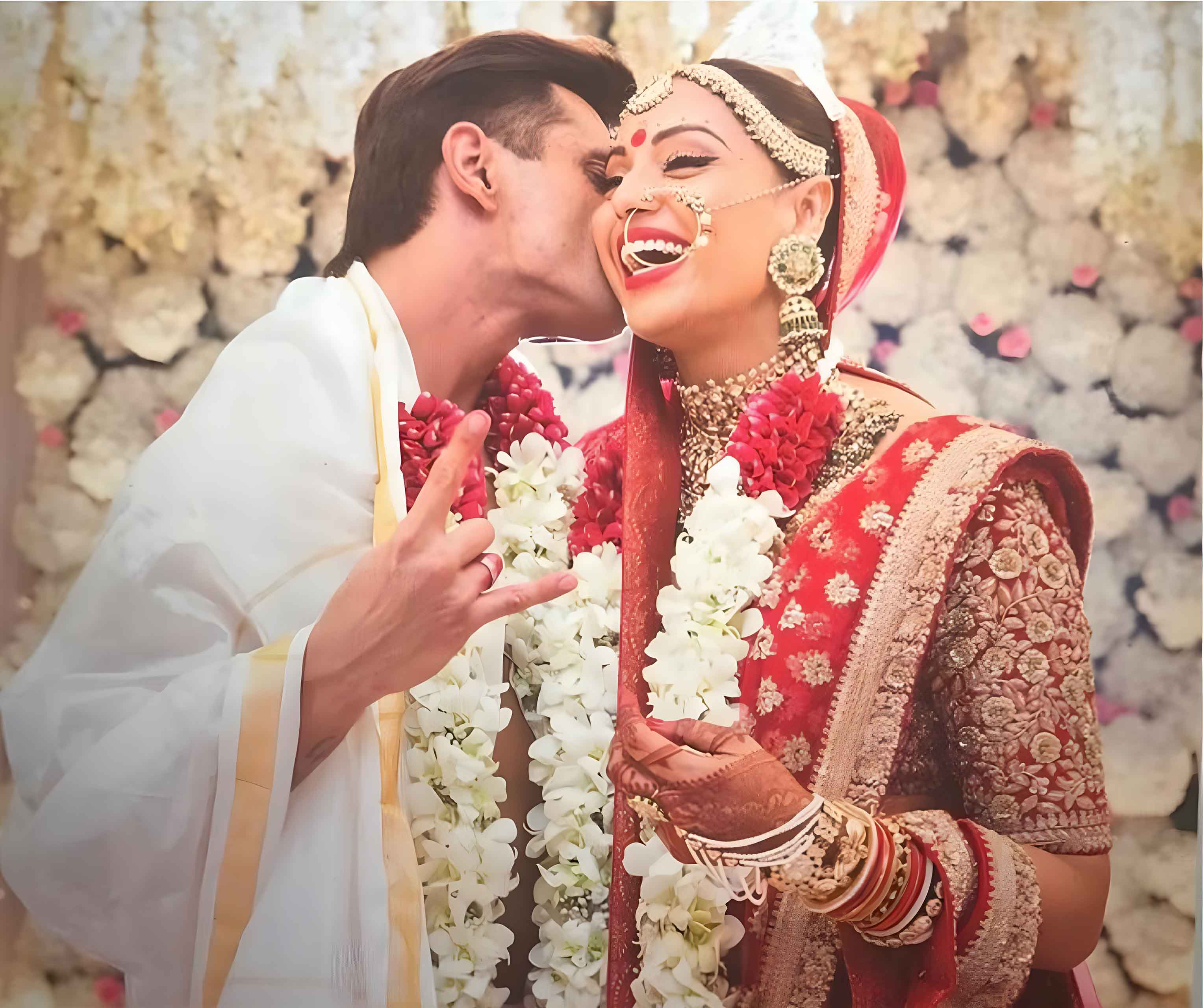
Comments (0)
No comments yet. Be the first to comment!